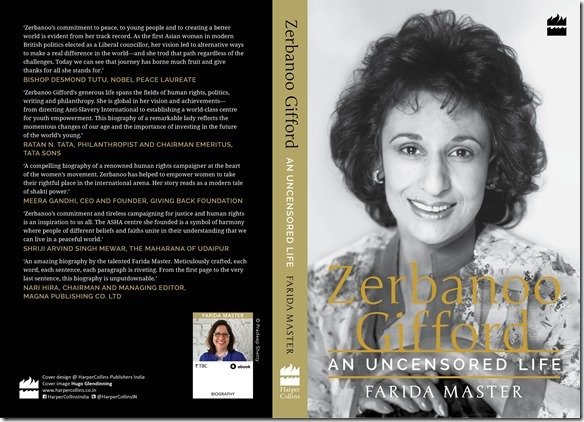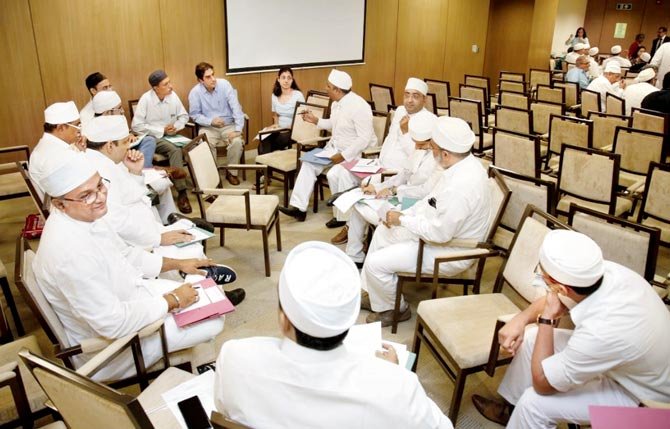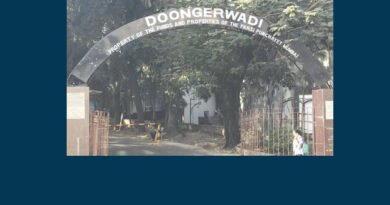The original rocket man: A new book examines the life and times of scientist Homi Jehangir Bhabha
Bhabha came to India in the summer of 1939, like every other year, for summer vacation, hoping to return after a few months. But the outbreak of World War II in September that year forced him to change his plans.
There were several reasons for which he considered postponing his return to England for a while. Logistical reasons apart, in England and elsewhere, most scientists joined the war effort and little attention was given to basic research. Therefore, going back to England did not seem to be an attractive prospect and Bhabha postponed it, at least for half a year, thinking that the war would end soon.
Always a man of action, Bhabha started contacting physicists in India and there was an offer from CV Raman from the Indian Institute of Science (IISc) in Bangalore. Bhabha took up the offer from Bangalore.
At that time, IISc was going through a turbulent phase. The governing council had differences with CV Raman, the first Indian director of the institute. There was tension between the departments of physics and chemistry. Raman had been removed from directorship and asked to be a mere professor of the physics department in the middle of 1937, two years before Bhabha’s arrival.
Initially Bhabha was given a readership in the physics department in 1940, for six months. His papers at this time, including a paper published in Nature in March 1940, had his address as “at present at IISc”. He gave a set of 25 lectures on his work on cosmic rays during this period. The Tata Trusts then asked him to continue for another five months.
To help Bhabha to get started with his work at IISc, Sir Dorab Tata Trust gave him a grant, with which Bhabha built up his cosmic ray research unit. Incidentally, IISc was founded by Jamshedji Tata in 1911, and the Tatas always had a representative in the council. Bhabha’s grandfather and father had both served in the council. Raman had also requested the Tata Trusts for a grant for nuclear physics research, but he was refused, on the ground that the trust had already donated some money to Meghnad Saha for nuclear physics research in Calcutta.
There was some tension brewing between Saha and Raman which would spill over to many aspects of science research in India in later years. It is also possible that the seeds of a future tension between Saha and Bhabha had been sown early, during the late 1930s.
Meghnad Saha had dazzled the world of physics with his work on ionisation of gas in the 1920s, which had opened up a new vista in astrophysics. He had been at the Allahabad University before moving back to Calcutta in 1938. He had also been appointed a member of the IISc Council that year.
Saha had invited Bhabha to visit Calcutta University, in April 1940, and give a set of lectures on cosmic ray physics, and wrote: “Myself and my students are very anxious to meet you and have full discussion on all matters concerning cosmic rays with you.” He wrote that “Calcutta is usually wet during July, but being a Bombay man you cannot have much to complain of” (A Masterful Spirit) and suggested that if possible they could also go to Darjeeling for vacation and some cosmic ray work.
Bhabha accepted the offer and gave a set of lectures in Calcutta in December 1940. On Saha’s prodding, both the universities of Allahabad and Calcutta offered the post of readership to Bhabha. However, apart from the intolerable heat in summer months in these places, Bhabha thought that they would not give him “sufficient scope for ultimately building up an outstanding school of physics” (Building Scientific Institutions in India: Saha and Bhabha).
Raman took an instant liking to Bhabha, and extended his helping hand in setting up the cosmic ray research unit, which was first set up in one of the verandas adjoining the library. Bhabha had a small team of dedicated students and workers. As usual, his artistic mind took him around Bangalore and he discovered the ancient artwork in the temples of Belur and Halebid.
Incidentally, Bhabha took a special interest in the history of art and architecture in India. After returning to India, he had gone on trips to many ancient sites, such as Elephanta and Ajanta caves, Ellora, Sanchi, Fatehpur Sikri, and made sketches. Rudolf von Leyden, a German cartoonist who moved to Bombay, once reminisced about Bhabha’s interest in history and architecture in Delhi: “Bhabha was deeply conscious of the beauties of the cities of Delhi, and whenever he could steal an hour, would relax at Hauz Khas, or in sight of one of the Lodi Tombs, or in front of the magnificent facade of Sher Shah’s mosque of Purana Kila” (Homi Jehangir Bhabha).
Bhabha’s interest was not skin deep at all, as can be judged from how he explained the art of Belur-Halebid temples near Bangalore to Cecil Powell, a British physicist, who visited the place a decade later. Bhabha told him that these temples represented a late baroque style and not the classical phase of Indian art, which must have been marked with more simplicity, but of which almost nothing remained in India, unlike, say in Egypt.
Bhabha was also interested in modern architecture – something that helped in shaping his own institute later in Bombay. He was often anguished by the tasteless office buildings that came up in Indian cities after independence. Rudolf von Leyden remembered that once they were standing on the ramparts of Purana Quila, and Bhabha lamented that the cityscape was being destroyed by officialdom who had no knowledge of history of the place (in this case Delhi) and no taste in architecture. According to Bhabha, a half-ruined chhattri at the end of a broken-down wall had more significance than all the post-independence buildings (“Bhavans”, the suffix used for all of them) put together.
Music had often been a solace for Bhabha. His brother Jamshed Bhabha once said: “What religion, with its forms of ritual and prayer, is to so many, music was to him. In times of stress, it gave him solace and strength, and all time, music was a source of immense stimulus and inspiration to him” (A Masterful Spirit).
At Bangalore, Bhabha attended the Sunday morning concerts of classical music at Basavangudi, often in the company of Vikram Sarabhai (who would later set up India’s space programme). Sarabhai was younger than Bhabha by a decade, and was born of an influential industrialist family in Ahmedabad. He had also gone to Cambridge for studies in physics, but the war had dashed his hopes of continuing his postgraduate studies there, after he finished his Tripos examination in 1940.
He came back to India and started working on his PhD under Raman, and that too in cosmic rays. The impetus to do work on cosmic rays came partly from the lectures of Robert Millikan from California Institute of Technology, in 1940, during his visit to India for collection of data regarding cosmic rays.
Incidentally it was Millikan who had coined the term “cosmic rays”. Millikan had pushed the idea that cosmic rays were all high-energy gamma-ray photons, while others were of the view that a large fraction of them were particles.
A tell-tale difference between the two hypotheses was that in the photon model, cosmic ray flux would not vary with latitude on Earth, whereas in the particle model, it would. This was because of the fact that the Earth had a magnetic field, and charged particles would be deflected by it, depending on the energy, and the degree of deflection would depend on the latitude.
This was why Compton and Millikan visited various places around the globe, including India, for collecting data and to check whether there was a “latitude effect” or not. Ultimately it was shown that the cosmic ray flux did vary with latitude. This meant that they mainly consisted of charged particles.
But Millikan’s visit to Bangalore made Raman and Sarabhai also realise that southern India offered an interesting location for cosmic ray studies. The magnetic equator passed close to the southern tip of the Indian mainland, and therefore doing cosmic ray experiments in these localities was bound to show interesting effects that would be absent in higher latitudes, in temperate places. Sarabhai had built a detector for this purpose, a Geiger Counter, and he presented his first paper in 1941 in a meeting of the Indian Academy of Sciences.
Bhabha and Sarabhai had many things in common other than their passion for cosmic ray research. Both were from west India, while most other scientists and science students those days used to hail from the south or east. They were both from privileged families of industrialists, and had both studied in Cambridge. It was not a surprise, therefore, that they were drawn to one another.
In the evenings, they would spend time at the posh West End hotel (which Bhabha would continue to patronize during his later visits to Bangalore). There, Bhabha and Sarabhai used to meet local friends, one of whom was an attractive Sri Lankan lady named Anil D’Silva. Reminiscing about those days, Sivaraj Ramaseshan, a nephew of Raman would later express how the scandalised students, “mostly middle-class, conservative Tamil Brahmins” used to “look at them with envy”.
They must have also found work habits peculiar. He would work until late at night, and come to the institute in the afternoon in his car. Bhabha’s demeanour could be intimidating for many others as well. George Greenstein in his essay once wrote about an incident, in which “a man who dined with Bhabha overseas on one occasion…reported that Bhabha had brought along an aide whose sole function appeared to be to pay the bills. It would not have been seemly for a gentleman to be seen dipping his hand into his pocket, and, above all else, Bhabha was a gentleman.”
Source: Click Here





